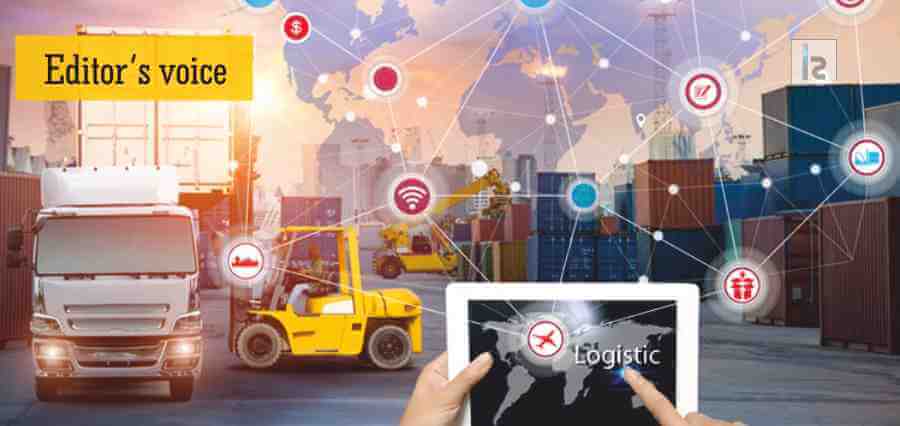Whether by land, air or sea, transportation and logistics are the pivotal elements for the businesses to attain profitable outcomes. In this developing world, where access to the real-time data is critical, IoT is playing a curated role in optimizing the critical logistics and transportation operations. Today, this advent of IoT along with the developing mobile technologies is connecting all devices across a centralized cloud network. It is helping to capture, and share the mission-critical data, allowing gaining real-time visibility of the logistics and transportation operations.
IoT can provide actionable insights about the Enterprise Asset Intelligence, aiding the transportation and logistics industry to expand in following aspects:
End-to-End Supply Chain Visibility
It is necessary to adapt IoT to transform the supply chain rather than crawling behind in the market.
To impact globally, IoT can provide an efficient supply chain platform for the logistics and transportation industry. It provides complete visibility and faster detection of issues which creates a network of timely decision-making. Also, enhanced supply chain visibility leads to long-term cost savings.
IoT combines an organization’s online presence with the physical stores and enables it to collect and make data at key points in the supply chain. This unlocks the doors for end-to-end customer satisfaction and successfully optimizes supply chain responsiveness. Also, automated data capture helps in avoiding human errors. With the sensor-enabled IoT solutions, organizations can monitor the location and speed of vehicles empowering the maintenance operations.
IoT-based connected sensing technology can maintain temperature stability and minimize the wastage of perishable products, thereby enhancing the end-to-end supply chain visibility. It also allows the exchange of critical real-time information with the stakeholders and mitigates disruption.
Another major variable which could be managed in a better manner by the IoT to attain an effective supply chain visibility is inventory and equipment monitoring. As such, it would provide predictive maintenance information, alerting the engineers for the potential breakdowns and costly disruption.
Managing the Storehouse
A warehouse is amongst the core parts of a transportation and logistics organizations. More effective management of the warehouse enables an organization with more advanced capabilities for prominent execution of the operations. Tracking vehicles, equipment, and inventory data through well designed IoT-enabled mobile devices help the small-scale as well as large-scale organizations to withstand the market complexities.
Further, the real-time data collection through the physical devices, storehouses in the transportation and logistics industry can share every mission-critical data in the centralized cloud. This ensures on-time delivery of a particular product at the right location. Thus, the IoT-based mobile devices at a storehouse will enhance the productivity highgrounds of an organization by analyzing the available historical data.
These devices will reduce the risks of manually conducted routine tasks by the in-house personnel. It will also decrease numerous visibility related blemishes including indistinct trailer moves, goods shrinkage, consumed fuel and wasted time, warehouse gate bottleneck and so on. thereby fastening the asset and location tracking.
Fleet Management
Fleet management plays a key role in managing maintenance schedules, everyday vehicle usage, and service routes. It is necessary to minimize the fleet downtime in order to attain a profitable business outcome. With IoT-based scanners, computers and other mobile devices, organizations can obtain asset visibility and better streamline operations to keep their fleet moving.
Moreover, the real-time equipment and infrastructure monitoring through connected IoT devices help field technicians to successfully take precautionary measures to avoid the future risks. This provides the organization with remote intelligence enabling it to manage the fleet and reduce unnecessary and reactive responses.
Replacing manual and hard-copy orders with the IoT-enabled operations will improve the fleet performance, save time and upsurge data accuracy. IoT connectivity enables an enterprise to communicate with its carters regarding the in-field repairs, maintenance, etc. Also, they can be regularly updated on certain conditions such as bad weather or traffic through this connectivity. This will definitely manage the fleet in a better manner, increase their safety, reduce damaged inventory, and decrease insurance-related costs which are critical to an organization’s bottom line. As such, it would power the fleet with on-time responding to the customer service inquiries improving the organization’s overall performance.
Future Hinges
The constant developments in the mobile technology and IoT will dramatically take the transportation and logistics industry beyond the horizons in the near future. Connected IoT devices will deliver exclusive solutions which will be a turning point for the organizations to pinpoint inefficiencies in real time, which will build progressive plans to move towards innovation. As such, IoT can really make a difference in a logistics and transportation organization’s ability of closely monitoring and dealing with more variables in the upcoming future.


